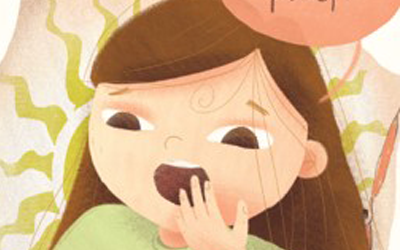Some of the methods children (and adults) use to try to control frightening thoughts in order to relax (or that’s what their parents told them to do) are attempting distractions, trying to think “good” thoughts, and trying to stop worrying.
In fact, these ways may lead to very temporary relief from anxiety, but in the long run, the result is potentially a significant increase in the anxious and frightening thoughts.
Why is this happening? Here’s a little experiment:
A. For the next three minutes, do your best not to think of a pink rabbit standing on a rock. Notice what happens during the exercise. What is the result? Did you manage not to think about the rabbit, or did he jump into consciousness several times?
B. Now, in the next three minutes, try to do the opposite. Do everything you can to think of this rabbit. Do it as strongly as possible. Please see if during the exercise the picture starts to fade, if something in it changes, or if other thoughts pop up. What was the result?
C. Now, in the next three minutes, watch your thoughts. If thoughts of a pink rabbit pop up, stay in the role of a viewer/observer. Do not do anything with the thought. Be passive. See this thought as part of a general landscape of thoughts. Just another one of the thoughts/images you have in your mind. What is the result?
When we try to make an effort and not think about something, there is a rebound effect where we think about it a lot more. On the other hand, if you try to think of something proactively or take an observer role, it is difficult to maintain it. Similarly, children who constantly try not to think about the worrying thoughts, both by behavioral attempts at thought (like distraction) and by seeking closeness to the parent, will actually experience a perpetuation and amplification of these frightening and worrying thoughts. These thoughts, of course, come with negative anxious feelings (heart racing, stress, sweating, etc.._)
A key element in Cognitive Behavioral Therapy is achieving this understanding and building a gradual plan to cope with scary or frightening thoughts. For example, a very important element in the treatment of OCD (Obsessive Compulsive Disorder) is changing the way we relate to obsessive thoughts. Instead of trying to get rid of the thought, we want to “stay” with the thought till anxiety reduces.
For our book about Cognitive Behavior Treatment for teenagers Obsessive Compulsive Disorder click here




0 Comments